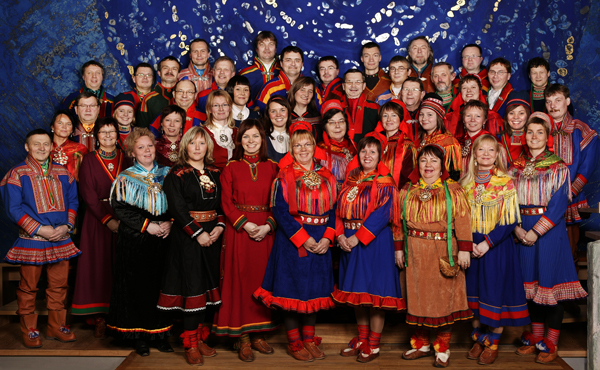Norway’s Sámi Parliament
Getting to 50-50
Today, Norwegian women occupy 37 percent of the seats in the Norwegian National Parliament. Few other countries in the world, namely Sweden, Rwanda, Denmark and the Netherlands, can boast such a high percentage. But as we congratulate Norway on this truly rare and remarkable achievement, it is important to note that a perfect 50-50 gender balance has been achieved in Norway's own back yard.

The parliament of the Sámi people, Norway's indigenous ethnic group, recently achieved the coveted 50 percent balance, an event unaccompanied by media fanfare and street parades, with many Norwegians unaware of it.
How did this Norwegian minority parliament achieve, by today's standards, the impossible?
First, the background.
The Sámi, sometimes called the Saami, Lapps, or Laplanders, are the original inhabitants of Northern Europe. They have their own distinct language, dress and culture. They may be best known as the traditional nomadic reindeer herders of the far north. Today, about half of all Sámi live in Norway, the rest are spread across Sweden, Finland and Russia.
After decades of discrimination, Norway established the Sámi Parliament, or Sámediggi, in 1987, with jurisdiction over matters such as Sámi cultural heritage, education, language, business and culture.
So -- how did they achieve that "impossible" 50-50 balance?
In 2001, the Sámi Parliament had only seven female members, yet in 2005, twenty-two women were elected, a 300 percent increase. Moreover, in 2005, the Sámi elected a woman, Aili Keskitalo, as the president of the Parliament, with her power being similar to Nancy Pelosi, the Speaker of the House of Representatives in the United States, and Dalia Itzik, the President of the Israeli Parliament, the Knesset.
Torunn Pettersen, political scientist and researcher at the Nordic Sámi Institute explains that publicity is the key to electing women. "Low female representation in the Sámi Parliament has continually been on the agenda since the 2001 election. It has been discussed both continuously in the Sámi Parliament and the media. When the publicity is so great, it impossible to let things go unchanged," says Petterson.
According to Petterson, a revised party nomination process also helped. Berit Oskal Eira, the former State Secretary for Sámi and Minority Affairs, offers a similar explanation for what made a difference in the 2005 elections. "The two largest groups in the Sámi Parliament, the National Alliance of Norwegian Sámi (NSR) and the Norwegian Labor Party, took female representation very seriously in the nomination process," she says. "In many constituencies, women were nominated as first or second candidates on the ballots. In some places there were actually women in both first and second places."
Research conducted in Norway on women's participation in the Sámi Parliament shows that the attitudes of the Sámi community toward gender equality was a significant factor in the extremely low representation of women in the parliament in the last two decades.
Researchers found that women are more difficult to recruit, especially to top positions. Sámi women are keen to be involved, but prefer to stay in the background. "You must involve them loosely," said one interviewee. "Women have not learned the attitude: ‘I'm here and I'm the best,'" said another.
Furthermore, interviewees also emphasized the fact that the candidate heading the electoral list has traditionally been the most marketable candidate. The first candidate on the party list must be experienced, conspicuous, and able to debate and confidently head a list. "Here, in our district, people want to know what ‘goods' they are being sold before they vote for the individual," one interviewee said. And since it is men who are normally known best, and are more conspicuous and experienced, it is men who therefore end up heading the party lists.
This research showed that in general, many women choose to prioritize children and family. They get involved in local cultural activities that are related to their children's activities -- active in other political arenas in the community, instead of seeking political leadership positions. Moreover, in order to have women at the top of the ballots, sometimes it is necessary for a man to decide whether he should give up "his" place for a woman, the researchers conclude.
So what is the formula for achieving the 50-50 gender balance? A media campaign, activism, a quota system and determination.
Adapted from an article by Beret Bråten for KILDEN magazine--Information Centre for Gender Research in Norway.



